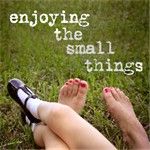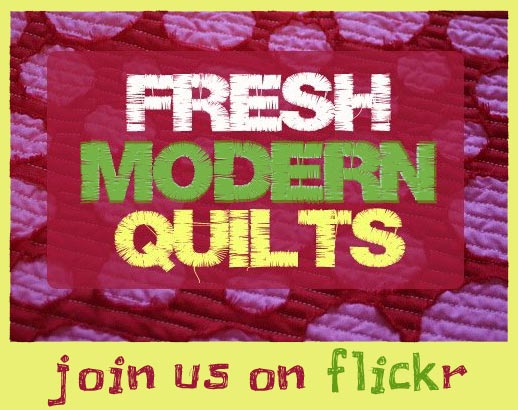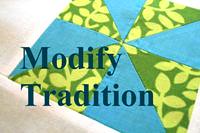Well, I started on my new quilting ideas for the girls' room.
I love how that sounds... the girls.
I'm making quilts for my girls :)
Girls!
I used the templates for the Center of Attention Quilt in the Handmade Beginnings book by Anna Maria Horner.
I liked how big these plates were (small is 17" across and large is 21" across) and that there were two different sizes for the plates- and I couldn't find a Dresden Plate template at Jo-Ann's.
Surprise.
(I can't really find much there that I want these days.)
And I decided to start this project at night, so most stores/quilt shops were closed.
Hey, you use what you've got, right?

So, I really didn't have that much of a plan.
I just started grabbing fabrics out of my scrap bins that I liked and that I was sure I could cut at least one blade from- big or small.
ALL of my pieces were from my scraps... ALL of them!
I'm super proud of this.
Extremely proud... not a single fat quarter or yard was cut in the making of this quilt!
Even the medallions for the centers were fussy-cut from scraps!

(80 small blades)
My scraps are all organized by color, so once I had all my scraps picked out
(after, of course, I beat my husband again in a game of hardcore Jeopardy)
and I started cutting, I made sure I had at least 20 blades of each 'color'.
I had a pile each of dark pinks/purples, light pinks, oranges/yellows, and then blues/teals.
And it takes 20 blades to make one plate, so that's how I came up with that number.
When all the cutting was finished and I needed a new rotary blade...
I had 80 small blades and 80 large blades (20 of each of my 'colors' for each size).
Even as I was cutting, I didn't have a solid plan about how I was going to arrange them.
I just figured this was a safe place to start.
Then came time to sew all the blades to make them pointy.
I'm pretty sure this is the 'easy' way to make Dresden Plates because there's no point to finagle with, you just sew the top together (right side in) and then flip and press to make the point.
I could be wrong about this being the 'easy' way, since I've never made these before.
But it sure seemed easy...
I chain pieced all my blades which made for a lovely sort of colorful bunting thingy which I decided to hang on my mantel and stare at for a little bit.
Colorful things make me happy.

(I just noticed everything about this picture is off-centered and crooked)
After all the snipping, flipping and spraying and pressing, I ended up with a gazillion pointy blades ready to be assembled into Dresden Plates.
I played with colors for a minute or two, trying to decide if I wanted to do all blue plates or pink plates, etc:
(plate using only dark pinks)
In the end I liked the plates that had all the different colors in them the best, so that's what I went with.
When I arranged them all together, I kind of had a pattern so none of the same 'color' blades were next to each other.

(plate using all the different colored blades)
I'm super psyched with the results:

I mean I LOVE them! Love.
I ended up with 4 large and 4 small finished Dresden Plates :)
I think these were pretty easy to make... there was a lot of pressing, though.
And take note: when doing a mindless task like ironing, make sure to move your haphazardly placed can of heavy-duty spray adhesive away from your can of spray starch at the end of the ironing board.
Failure to do so will result in a hot, sticky, gooey, totally stupid and completely preventable mess.
Just saying...
I don't think I'm done making these plates... I'm pretty sure I will want some more.
But- I'm not really set on a final pattern for either quilt, so we'll just wait and see.
I know that I will be making smaller ones for sure.
I found this great tutorial for making Dresden Plates (the easy way) out of 5" squares before I even had Anna Maria Horner's book and wanted to give the Dresden Plate a try.
It requires a Dresden Plate template.
As soon as I get my hands on one, you know what I'll be doing :)
A few last thoughts about the Dresden Plates:
*way easier than I expected
*way faster than I expected
*spray starch really helps with the pressing of the points, which was a little tricky at first to get them centered, but got easier (as long as you move the spray adhesive...)
* chain piecing all the blades were key
*ironing the center pieces/medallions into perfect circles was the trickiest part of the whole project.
*if you haven't tried making these yet, you should: it's very gratifying.
I've also finished a few other projects that I can't wait to show you in the near future...
And here's a little peek at some other stuff I'm working on:
future quilt:

pillow shams:

quilt for niece:

beginning of quilt for nephew:

color palette for custom nursery set:

And I think that's about all for today :)
































wow! You actually make it look easy and doable! (those dresden plates)I probably still won't try though! Love the red/aqua!
ReplyDelete